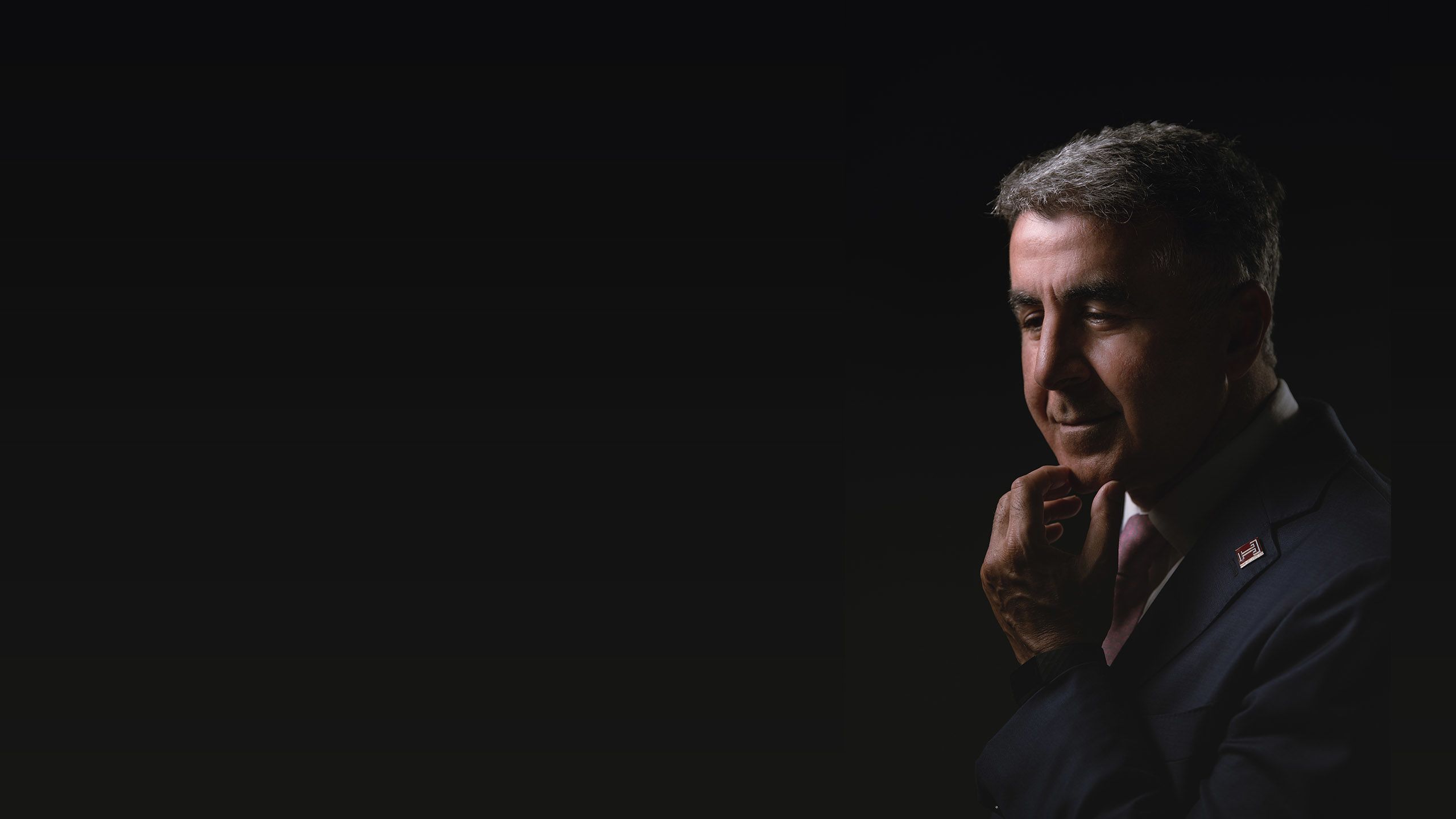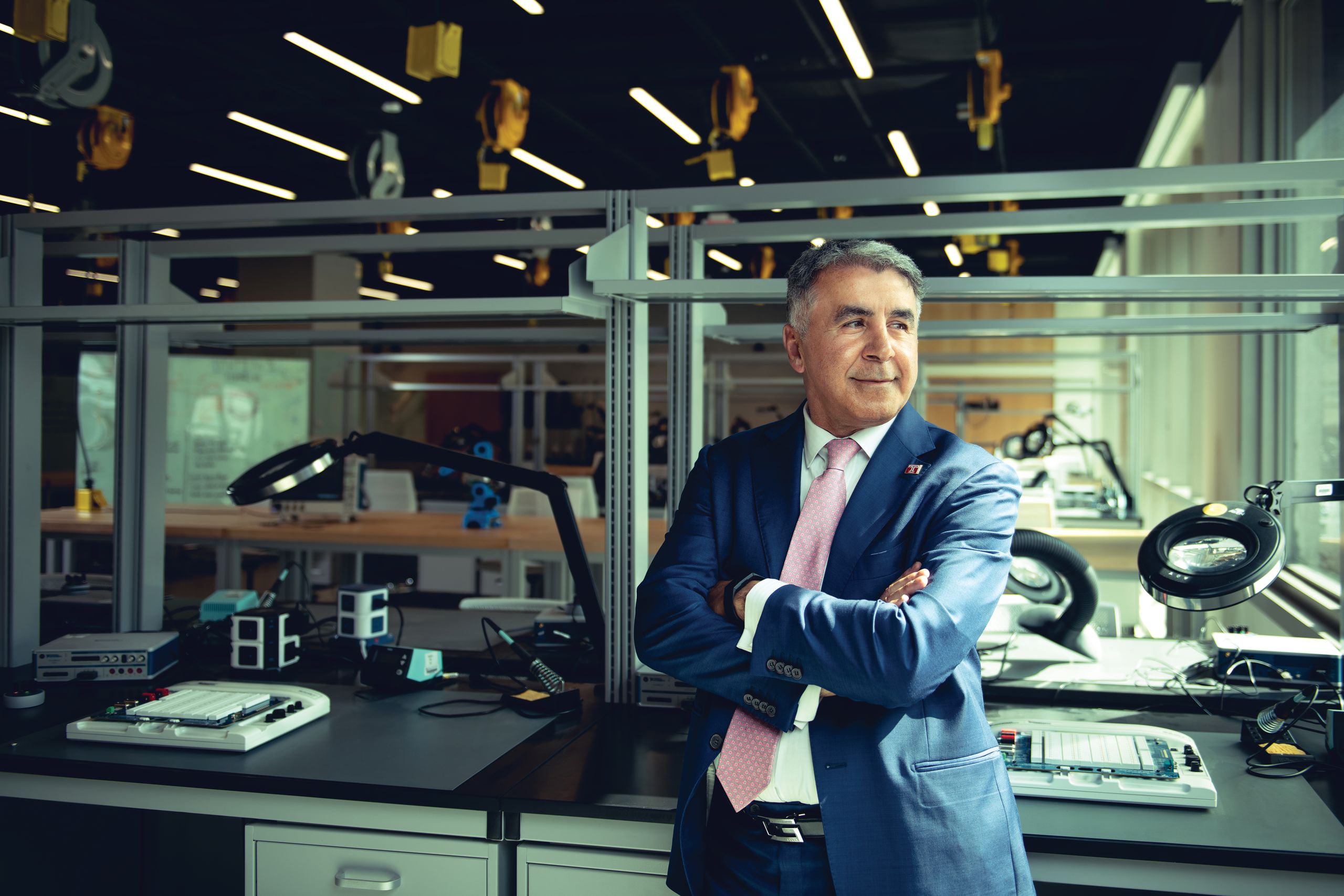In Conversation With Keya:
The Dean Talks 50 Years and Beyond

Temple’s College of Engineering was founded 50 years ago. The Dean, Keya Sadeghipour, has been around to see more than 20 of them, guiding the college into the future. Here, Sadeghipour opens up about diversifying the workforce, preparing students for a changing world, and what he hopes the next 50 years will hold for engineers.
If you ask Keya Sadeghipour who holds the world together, he’ll unequivocally tell you that it’s engineers—and he won’t hesitate to explain why.
“People sometimes forget how important engineering is to our survival,” he tells me over the phone. “We create an environment that everyone can benefit from. We’re always trying to determine ‘How can we help our fellow humans?’”
Sadeghipour’s voice rings with an earnestness that suggests this is what he has always believed. “The world is shrinking!” he acknowledges, sounding more optimistic than alarmed. “We are getting closer to one another and engineering makes what would have been impossible, possible.” He points to the coronavirus pandemic to demonstrate his point: a hyperlocal phenomenon that became a global event. “That’s how connected we are and engineering is a part of that,” he explained. Technological advancements have enabled us to track the virus, and, we hope, put us on a path toward a viable vaccine.
“This is something we’ve never seen before!” he says.
Though the virus limited us to meeting by phone, Sadeghipour’s vigor on the subject of engineering’s enduring significance enveloped the call. This vigor is what first helped Sadeghipour, the College of Engineering’s longtime Dean, convince others that the discipline should be a pillar of Temple University’s academic framework.
Back when he first joined the college in 1988, the field “took a backseat,” Sadeghipour tells me. But today, as the college marks its 50th anniversary, engineering is a “legitimate force” at Temple, a “bridge between everyone” that helps connect business to medicine, and the sciences to the arts. The proof is in recent growth, as well as a research portfolio bolstered by students and educators who are taking on the world’s biggest challenges. But for Sadeghipour, these successes wouldn’t be possible without the college’s eventful history, one that’s primarily marked by a series of reorganizations in the first 30 years, as well as the challenge to elevate the discipline in the following 20. At a time when the world needs engineers more than ever, Sadeghipour is confident that the first 50 years have perfectly positioned the college for the next 50.

Sadeghipour’s leadership at the College of Engineering goes back 22 years, to when he was appointed acting Dean of the school at a critical juncture in the college’s history.
“So many people at Temple Engineering don't know any dean other than me,” he says with a slight laugh. “But the reality, of course, is that the longevity is due to the fact that the leadership had to stay to bring [the college] to its present shape.”
At the time, the school’s enrollment was dwindling with fewer than 600 students, there was little emphasis on research, and the college faced the looming threat of being folded into the sciences. But with the backing of leadership and faculty, Sadeghipour would implement a series of five-year strategic plans to establish what he saw as engineering’s rightful place at Temple—a pillar alongside business, law, and medicine. At the college’s 30th anniversary, following as many as seven prior restructurings over the decades, Sadeghipour’s vision for stability involved upping the quality of the program by recruiting top-tier faculty and building a welcoming environment that embraced diversity.
“When the faculty members were recruited, they were provided with state of the art research labs and other resources that either matched or exceeded our competition,” he recalls. Pushing to bring the college into the modern research era paved the way for educators like Dr. Rominder Suri, the chair of Temple’s Department of Civil and Environmental Engineering and Director of the National Science Foundation (NSF) Water and Environmental (WET) Center. Rominder would further water research through a $4.25 million United States Agency for International Development (USAID) grant, part of a $30 million award over five years to a consortium of five American universities.

"As engineers, we have to make sure that we do not destroy this valuable resource because without it, we cannot survive."

“A long time ago, I instituted the idea that we really need to do something about our environment, particularly on the issue of water,” Sadeghipour says. “For that reason, and with the recruitment of faculty, we have the University's only NSF center.” According to the Dean, these research accomplishments further prove how engineers hold the world together. “We see that water has become even more important than oil. While we can find new sources of energy, there is no alternative to water,” Sadeghipour said. “As engineers, we have to make sure that we do not destroy this valuable resource because without it, we cannot survive.”
His own journey to engineering, beginning as a 17-year-old who left his hometown of Tehran, Iran to pursue a rigorous education in England, has informed his commitment to diversity. Sadeghipour recalled a class in Europe that had 72 undergraduate engineering students and only two of them were women.
The diversification of the College of Engineering didn’t happen by accident. The discipline is now the most diverse at Temple, with a student body that is 25% female and 32% of color. Sadeghipour remembers the days when these numbers were in the single digits, but it’s progress that must be nurtured.
“We are proud to support student groups like the Society of Women Engineers at Temple, but also are thoughtful about faculty representation. It is important that students can see themselves in those roles,” Sadeghipour said, noting that half of the college’s bioengineering faculty are female.
“I saw with my own eyes how difficult the discipline and the culture was, and I aimed for our institution to make sure that the number of women in engineering would increase. And that we would make it a very hospitable and supportive place for them,” he says. “They are among our best students, to be honest, because they are very determined.”
Sadeghipour’s winding beginnings, from Iran, to Europe, to working in California before settling down in academia, have shaped the college’s international aims. The school’s international students are its best ambassadors, Sadeghipour explains. “They are going to go back to their home countries, with treasured memories and appreciation for what we provided them. And they spread all over the world.” Besides, engineering is an international language, a common tongue. “There is no difference between engineering in the United States and engineering in China or Russia or anywhere else.”
The next 50 years of the college will be about bringing the disciplines together, Sadeghipour declares. “In the past, people were working in silos. That can no longer be. They cannot say, ‘This is mine and that is yours.’ It has to be, ‘These are ours.’ We have to succeed together or we fail together."
The college has experienced its longest period of stability, Sadeghipour notes, since his appointment as dean in 2003. “There have not been any attempts at reorganization, which shows that we have been on a continuous path,” he says.
And moving forward, Sadeghipour hopes the school will move students to seize on the vibrancy of North Philadelphia. “I’ve always believed that the institution must serve the community,” he says. “And looking around, one can see that diversity is prominent here.” He wants students to step outside and see the beauty but also the social and economic challenges facing Temple’s surrounding community, and then help to fix them.
“Engineering education is extremely important for the wellbeing of this neighborhood and the country,” Sadeghipour says. “We build things, but if we don't have enough builders we will fall behind.”

"We have to succeed together or we fail together."

